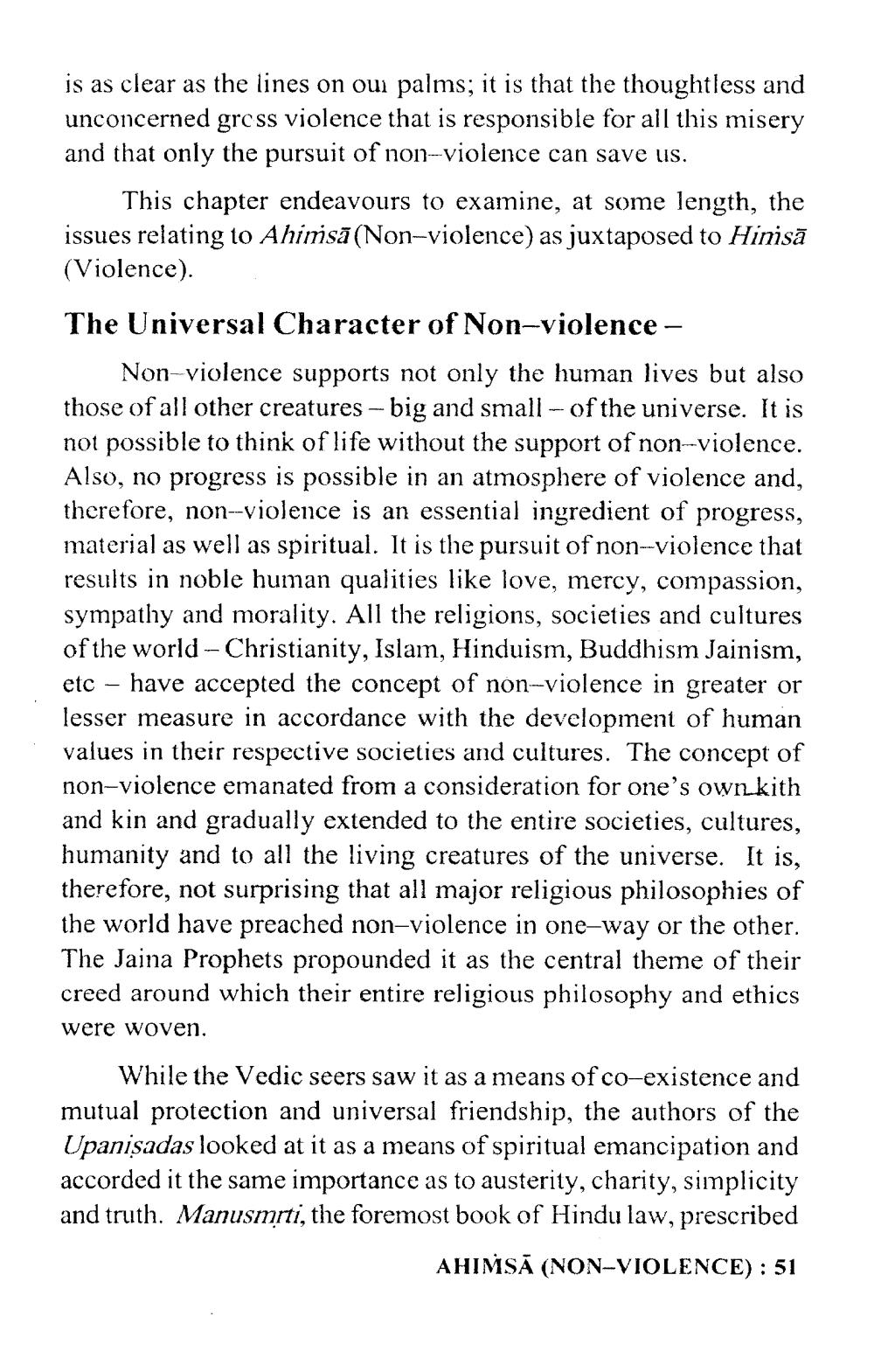________________
is as clear as the lines on oui palms; it is that the thoughtless and unconcerned gross violence that is responsible for all this misery and that only the pursuit of non-violence can save us.
This chapter endeavours to examine, at some length, the issues relating to Ahimsā (Non-violence) as juxtaposed to Hinisā (Violence). The Universal Character of Non-violence -
Non-violence supports not only the human lives but also those of all other creatures - big and small- of the universe. It is not possible to think of life without the support of non-violence. Also, no progress is possible in an atmosphere of violence and, therefore, non--violence is an essential ingredient of progress, material as well as spiritual. It is the pursuit of non-violence that results in noble human qualities like love, mercy, compassion, sympathy and morality. All the religions, societies and cultures of the world - Christianity, Islam, Hinduism, Buddhism Jainism, etc – have accepted the concept of non-violence in greater or lesser measure in accordance with the development of human values in their respective societies and cultures. The concept of non-violence emanated from a consideration for one's own kith and kin and gradually extended to the entire societies, cultures, humanity and to all the living creatures of the universe. It is, therefore, not surprising that all major religious philosophies of the world have preached non-violence in one-way or the other. The Jaina Prophets propounded it as the central theme of their creed around which their entire religious philosophy and ethics were woven.
While the Vedic seers saw it as a means of co-existence and mutual protection and universal friendship, the authors of the Upanişadas looked at it as a means of spiritual emancipation and accorded it the same importance as to austerity, charity, simplicity and truth. Manusmrti, the foremost book of Hindu law, prescribed
AHIMSĀ (NON-VIOLENCE): 51




